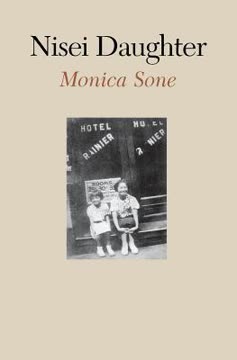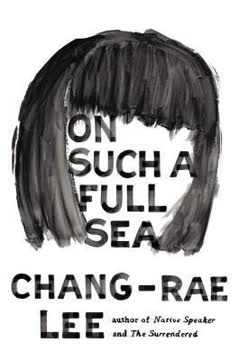Key Takeaways
1. Discovering Identity Through Cultural Duality
One day when I was a happy six-year-old, I made the shocking discovery that I had Japanese blood. I was a Japanese.
Early awareness. Monica Sone's childhood was marked by a gradual realization of her Japanese heritage, initially perceived as a "shocking fact of life" that set her apart. This awareness grew as she navigated two distinct worlds: the American culture of her daily life and the Japanese traditions of her family. This duality shaped her understanding of self and her place in society.
Conflicting expectations. The expectations of these two worlds often clashed, creating internal conflict. Attending Japanese school after regular school meant sacrificing playtime, a direct confrontation with her American desire for freedom and fun. This early experience highlighted the challenges of balancing different cultural norms and expectations.
Embracing complexity. Despite the initial shock and subsequent challenges, Sone's narrative shows a gradual acceptance and eventual embrace of her dual identity. This acceptance is not without struggle, but it forms the core of her unique perspective and resilience. It is a journey from initial resistance to a more nuanced understanding of what it means to be a Nisei, a second-generation Japanese American.
2. Navigating Prejudice and Discrimination
I thought the whole world consisted of two or three old hotels on every block.
Early innocence shattered. Sone's early life in Skid Row, Seattle, was a microcosm of diverse humanity, largely untouched by racial prejudice. This sheltered existence was disrupted as she encountered overt discrimination, particularly in housing and employment, revealing the harsh realities faced by Japanese Americans.
Systemic barriers. The search for a summer cottage at Alki Beach becomes a painful lesson in systemic racism, as numerous rental opportunities evaporate upon the revelation of her family's Japanese heritage. This experience underscores the pervasive nature of prejudice, which extended beyond individual biases to affect access to basic necessities.
Internalized shame. The constant exposure to prejudice leads to a sense of internalized shame and a questioning of her own identity. Sone grapples with the feeling of being an outsider, caught between two worlds that often reject her. This struggle highlights the psychological toll of discrimination and the importance of self-acceptance.
3. The Complexities of Family and Tradition
Up to that moment, I had never thought of Father and Mother as Japanese.
Generational divide. The story explores the generational gap between Issei parents and their Nisei children, highlighting differences in language, values, and cultural orientation. While the parents cling to Japanese traditions, the children strive to assimilate into American society, leading to misunderstandings and conflicts.
Parental expectations. Sone's parents, particularly her father, hold strong beliefs about Japanese etiquette and propriety, which often clash with her American upbringing. The pressure to conform to these expectations creates tension and a sense of being constrained by tradition.
Finding common ground. Despite these differences, the family bonds remain strong, and Sone gradually comes to appreciate the sacrifices and values of her parents. This appreciation is tempered by a desire for personal freedom and self-expression, reflecting the complex dynamics of immigrant families.
4. The Impact of War on Personal Identity
During those impressionable years, the police became our sworn enemies, especially after two of them shoved their way into our household one night and arrested Father as a bootlegger.
Shifting perceptions. The bombing of Pearl Harbor dramatically alters the social landscape for Japanese Americans, transforming them from a marginalized minority into perceived enemies of the state. This shift in perception leads to increased suspicion, hostility, and discrimination.
Loss of rights. The Executive Order 9066 results in the forced removal and incarceration of Japanese Americans, stripping them of their homes, businesses, and basic civil liberties. This act of mass injustice underscores the fragility of rights and the vulnerability of minority groups during times of national crisis.
Questioning loyalty. The war forces Japanese Americans to confront questions of loyalty and identity, as they are pressured to prove their allegiance to a country that has betrayed them. This dilemma creates deep internal conflict and challenges their sense of belonging.
5. Finding Strength in Community and Heritage
This was the playground where I roamed freely and happily.
Skid Row haven. Despite its rough exterior, Skid Row provides a unique sense of community and acceptance for Sone and her family. The diverse mix of residents, including kind-hearted hotel patrons, creates a supportive environment where she feels safe and valued.
Nihon Gakko's dual role. While initially resisted, Japanese language school becomes a place of connection and cultural preservation. It fosters lasting associations with other Nisei and reinforces a sense of shared heritage, even amidst the pressures of assimilation.
Community support. The Japanese community rallies together during times of crisis, offering mutual aid and solidarity. This support network provides a sense of belonging and resilience in the face of discrimination and hardship.
6. The Allure and Disillusionment of Japan
To walk up the plank to a boat which had just come from Japan was exciting — like a state fair, an educational tour and a trip to a foreign land all rolled into one.
Seeking roots. The family's trip to Japan offers a chance to connect with their ancestral homeland and experience Japanese culture firsthand. Sone anticipates a romanticized vision of Japan, filled with beauty and tradition.
Cultural clashes. However, the reality of life in Japan proves to be more complex, as Sone encounters cultural differences and social expectations that clash with her American sensibilities. She feels like an outsider, struggling to fit in with Japanese customs and values.
Reaffirming identity. The trip ultimately reinforces Sone's sense of being an American, as she realizes that her cultural identity is a unique blend of Japanese and American influences. This realization strengthens her commitment to her life in the United States.
7. Resilience and the Search for Belonging
I had always thought I was a Yankee, because after all I had been born on Occidental and Main Street.
Finding home. Despite the challenges and injustices she faces, Sone remains resilient and determined to find her place in American society. She actively participates in school activities, pursues her education, and seeks meaningful connections with others.
Redefining Americanism. Sone's story challenges the narrow definition of Americanism that excludes people based on race or ancestry. She asserts her right to belong and contribute to the fabric of American society, regardless of her Japanese heritage.
Embracing complexity. The narrative concludes with a sense of hope and a commitment to building a more inclusive and just society. Sone's journey is a testament to the power of resilience, the importance of self-acceptance, and the ongoing search for belonging.
8. The Power of Personal Connection Amidst Societal Upheaval
We were satisfied with her just as she was.
Family as anchor. Throughout the tumultuous events, Sone's family provides a constant source of love, support, and stability. Their shared experiences and unwavering commitment to one another help them navigate the challenges of war and discrimination.
Friendship transcends prejudice. Sone's friendships with people like Chris and Marta demonstrate the power of personal connection to overcome prejudice and build bridges across cultural divides. These relationships offer a sense of hope and reaffirm the inherent goodness of humanity.
Small acts of kindness. Even in the face of widespread injustice, small acts of kindness and compassion can make a significant difference. These gestures of empathy and support provide a glimmer of light in the darkness and remind us of our shared humanity.
Last updated:
FAQ
1. What is Nisei Daughter by Monica Itoi Sone about?
- Autobiographical memoir: Nisei Daughter is Monica Itoi Sone’s personal account of growing up as a second-generation Japanese American (Nisei) in Seattle before, during, and after World War II.
- Cultural and historical context: The book explores her family’s experiences with discrimination, forced evacuation, and life in internment camps, set against the backdrop of Japanese American history.
- Themes of identity and resilience: Sone’s narrative follows her journey of self-discovery, the blending of her Japanese heritage with her American identity, and her family’s endurance through adversity.
2. Why should I read Nisei Daughter by Monica Itoi Sone?
- Firsthand historical perspective: The memoir offers a rare, personal glimpse into the Japanese American internment experience, a significant but often overlooked chapter in U.S. history.
- Insight into bicultural identity: Readers gain an understanding of the challenges faced by Nisei individuals balancing Japanese traditions with American upbringing, including issues of acceptance and prejudice.
- Inspiring story of resilience: Monica’s candid storytelling highlights courage, hope, and the power of community in overcoming injustice and adversity.
3. What are the key themes and takeaways from Nisei Daughter by Monica Itoi Sone?
- Identity and belonging: The central theme is the Nisei’s struggle to find a sense of self amid conflicting cultural expectations from Japanese immigrant parents and American society.
- Discrimination and resilience: The book documents the prejudice faced by Japanese Americans and their determination to maintain dignity and cultural pride.
- Generational and cultural divide: Sone explores the gap between Issei (first generation) and Nisei (second generation), shaped by language, culture, and legal status, affecting family and community dynamics.
4. What does the term "Nisei" mean in Nisei Daughter and why is it important?
- Definition of Nisei: "Nisei" refers to second-generation Japanese Americans—children of Japanese immigrants (Issei) born in the United States.
- Cultural significance: Nisei were American citizens by birth but often felt caught between their parents’ Japanese traditions and the American society they grew up in.
- Identity conflict: This dual identity is a central issue in the book, shaping the Nisei’s experiences of acceptance, belonging, and cultural negotiation.
5. How does Monica Itoi Sone describe the Japanese immigrant community in Seattle in Nisei Daughter?
- Organized ethnic enclave: The Seattle Japanese community was tightly knit, with its own business district, newspapers, cultural associations, and religious institutions.
- Preservation of traditions: The Issei maintained Japanese customs, language, and social hierarchies, emphasizing respect for elders and formal etiquette.
- Generational subcultures: The Issei and Nisei formed distinct but related subcultures, with the Nisei more Americanized yet still influenced by Japanese heritage.
6. What role does the Japanese Language School (Nihon Gakko) play in Nisei Daughter by Monica Itoi Sone?
- Cultural preservation: The Japanese Language School was central to teaching Nisei children Japanese language and customs, reinforcing ethnic identity.
- Discipline and tradition: The school emphasized strict discipline and respect for Japanese etiquette, contrasting with American schools.
- Bicultural experience: Attending Nihon Gakko required Nisei children to navigate between their American and Japanese personas, highlighting their dual existence.
7. How does Monica Itoi Sone portray her family dynamics and parental relationships in Nisei Daughter?
- Atypical Issei parents: Her parents were intellectually and culturally sophisticated, with her father aspiring to legal training and her mother being a poet and Christian minister’s daughter.
- Mother-daughter bond: Monica had a close, companionate relationship with her mother, which deepened her understanding of Japanese language and culture.
- Traditional values: Family life was shaped by Japanese values of obligation and respect, though these were often implicit rather than openly discussed.
8. What challenges and discrimination do the Nisei face in Nisei Daughter by Monica Itoi Sone?
- Employment and housing barriers: Nisei faced limited job opportunities and were often barred from renting or buying homes in certain neighborhoods due to racism.
- Social exclusion: Despite being American citizens, Nisei were often isolated from mainstream society and subjected to systemic prejudice.
- Psychological impact: These experiences led to a profound identity crisis and a sense of being outsiders, which Sone conveys with emotional depth.
9. How does Nisei Daughter by Monica Itoi Sone describe life in the internment camps?
- Harsh living conditions: Families lived in cramped, bare barracks with poor sanitation and minimal privacy, enduring mud, discomfort, and monotony.
- Community adaptation: Despite adversity, internees created a semblance of normal life with schools, churches, and social events, building furniture and organizing activities.
- Emotional resilience: The camps were places of spiritual trial but also of hope and solidarity, with faith and community support helping families endure.
10. How did the attack on Pearl Harbor and World War II impact the Japanese American community in Nisei Daughter?
- Immediate fear and suspicion: The attack led to shock, fear of arrest, and suspicion toward Japanese Americans, with many Issei men detained by the FBI.
- Government actions: Executive Order 9066 forced mass removal and internment of Japanese Americans, including Sone’s family, who lost their homes and freedom.
- Destruction of heritage: Families destroyed Japanese books and objects to avoid suspicion, highlighting the deep impact on cultural identity and security.
11. What is the significance of the Nisei combat unit in Nisei Daughter by Monica Itoi Sone?
- Proving loyalty: The War Department formed a segregated combat unit for Nisei volunteers, offering a chance to demonstrate allegiance to the U.S. despite internment.
- Mixed community reactions: Many Nisei felt conflicted—resenting segregation but recognizing the need to prove loyalty and secure future rights.
- Turning point: The formation of the unit marked a shift from bitterness to active participation in the war effort, symbolizing hope for acceptance.
12. What are the most memorable quotes from Nisei Daughter by Monica Itoi Sone and what do they mean?
- On dual heritage: “It’s really nice to be born into two cultures, like getting a real bargain in life, two for the price of one.” This reflects Monica’s eventual pride in her blended identity.
- On resilience and sacrifice: “For the good of many, a few must suffer. This is your sacrifice. Accept it as such and you will no longer be bitter.” This quote highlights the acceptance and strength found in enduring hardship.
- On democracy and responsibility: “Her ideas and ideals of democracy are based essentially on religious principles and her very existence depends on the faith and moral responsibilities of each individual.” Monica emphasizes the importance of personal responsibility in upholding democratic values.
Review Summary
Nisei Daughter is a beloved memoir about growing up Japanese-American in pre-WWII Seattle. Readers praise Sone's engaging writing style, humor, and ability to capture cultural nuances. The book offers insights into Japanese-American life, Seattle history, and internment camp experiences. While some critics note a lack of bitterness towards injustices faced, most appreciate Sone's balanced perspective. Readers found the book educational, touching, and valuable for understanding this period of history. Many recommend it for its personal account of a complex time in American society.
Similar Books
Download PDF
Download EPUB
.epub digital book format is ideal for reading ebooks on phones, tablets, and e-readers.








